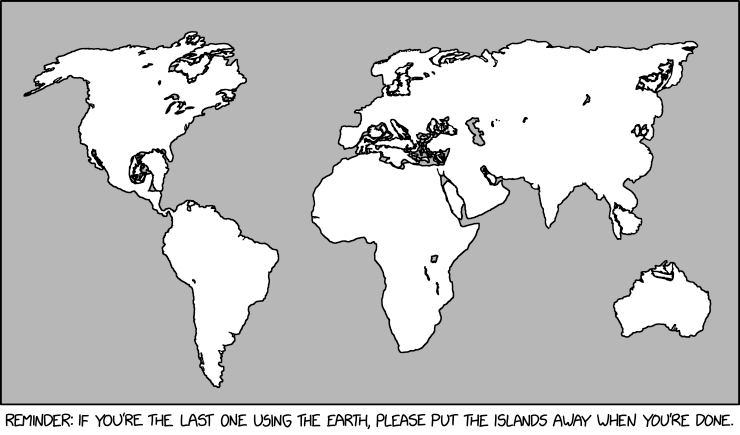Today is The Map Room’s 20th anniversary.
The rule of thumb is that an item is vintage if it’s more than 40 years old, and antique if it’s more than 100 years old. (That tan-coloured Replogle globe with South Sudan on it? Not antique.) Time runs faster on the web, though: something 20 years old feels geologically ancient. Running a 20-year-old blog in 2023 feels like keeping a pet coelacanth: you’re keeping a living fossil alive.
As social media approaches what may well be its extinction event, there’s been a lot of talk about “bringing back blogs.” Um, blogs never went away: Kottke.org just marked its 25th anniversary, and there are still plenty of websites out there powered by WordPress or something similar that don’t call themselves blogs. What faded away, I think, was the idea of, and self-identification as, a blogger. Lots of people started blogs in the format’s early years but didn’t keep up with them; social media was a better fit for what they wanted to do. Not many people start a blog qua blog to be a blogger nowadays. But institutions still post updates in blog form, and experts share their insights on platforms that blur the lines between blog, social media and newsletter.
(Certainly the map blog never went away: we still have general-interest blogs like Maps Mania and Lat × Long; industry and academic figures like Matthew Edney, Kenneth Field and James Killick regularly post commentary and links; and plenty of working cartographers share their latest creations on blogging platforms as well.1)
The Map Room is not an institution, nor am I an expert. No really: I’m not. The idea that someone with an intense interest in a subject but not much knowledge could start a blog as a way to explore the subject—“an exercise in self-education” is what I called it—was something that made sense in 2003. It might be a bit more archaic now.2 I am also, twenty years on, rather more self-educated: I understand what I’m linking to more than I used to, and I’ve seen enough to know when to be skeptical. I’ve called bullshit on more than one occasion. I still can’t make a map of my own (there’s an alternate universe in which I’m making a perfectly happy living as a freelance cartographer), but my appreciation for them is all the richer for having spent two decades at this.

